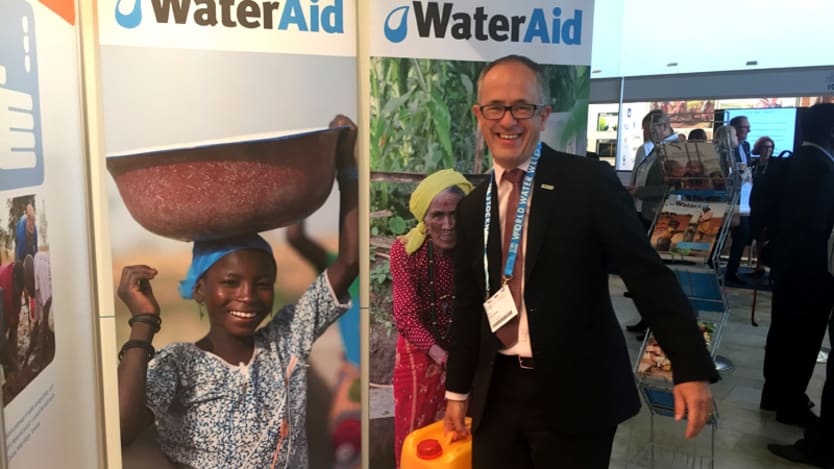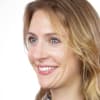
STOCKHOLM — The new head of WaterAid UK has called on the international water community to redouble its efforts to ensure that water, sanitation and hygiene, or WASH, services are equitable and to remember that the Sustainable Development Agenda’s call to “leave no one behind” means actively putting the poorest first.
Sustainable Development Goal 6 calls for countries to “achieve universal and equitable access to safe and affordable drinking water for all” by 2030, part of the agenda’s broader focus on inequalities. In recent years, however, the service gap between the richest and the poorest has grown in many countries — and in the area of sanitation, studies show that the better off are gaining access to facilities faster than their poorer neighbors.
Closing this access gap and ensuring the most marginalized communities, including people with disabilities, are prioritized is at the heart of WaterAid UK’s strategy, according to Tim Wainwright, who took over as chief executive in May following the retirement of Barbara Frost after 11 years at the charity.
Working in 35 countries with an income of 85.5 million pounds ($103 million) in 2016, WaterAid is the world’s largest NGO exclusively dedicated to WASH.
“WaterAid, and the entire sector, needs to make sure that sufficient attention is paid to WASH by politicians, donors and the private sector [because] WASH is a really key foundational part of the overall SDG framework,” he said, adding that “the place we really need to focus is at the country level and making sure ministries are coordinated, … the private sector is playing a role, and the citizens’ voice is included,” he said.
Wainwright — whose career highlights include running ADD International, a U.K. charity that supports the disabled poor in Africa and Asia, as well as senior roles with Oxfam, VSO and the U.K.’s Equality and Human Rights Commission — is confident that this type of work doesn’t require a background in WASH since it’s “good development practice.”
He believes his experience advocating for people with disabilities will help him understand barriers to access for WASH services, and he hopes that being able to draw on his past work with a range of organizations in different sectors may help WaterAid — and the sector as a whole — work more collaboratively. This was a key message emphasized by delegates at last week’s Stockholm World Water Week in Sweden.
The CEO, who also spent nearly 10 years working for British Airways as a marketing executive, said: “I hope I’ll be bringing a broad perspective to the work.”
According to the latest statistics from the World Health Organization and UNICEF — jointly responsible for monitoring progress toward the SDGs in WASH — 2.3 billion people are now without access to a decent toilet and 844 million do not have access to clean water.
Devex sat down with Wainwright during last week’s water conference in Sweden to get his thoughts on how the sector is faring in terms of meeting the SDGs and where it could do better. The conversation here has been edited for length and clarity.
Are we on track to meet SDG 6 on water?
I think that the aim of everyone, everywhere by 2030 to reach a higher standard than that set by the Millennium Development Goals [MDG 7 called on member states to halve the proportion of the population without improved drinking water] is exactly what everyone should be working toward — and it is achievable. However, it requires a significant step change in terms of commitments from where we are now. So it’s not a case of “steady as she goes and we’ll be fine,” but it is something we can do if there is sufficient political will, collaboration and joined-up thinking.
It’s also not just about SDG 6; most of the [other] SDGs will fail if WASH isn’t there. Specific examples are in health, nutrition and education. A new study published by WaterAid last week shows that half of all undernutrition cases linked to infections are caused by a lack of access to clean water, adequate sanitation and good hygiene. Furthermore, if you don’t have adequate toilets and menstrual facilities, then girls often drop out of school.
Where do you see the major gaps in progress toward meeting WASH goals?
“Sanitation and hygiene are still lagging, and these areas need the most focus.”
—What’s encouraging is there are plenty of examples where major progress has been made. For example, [using data from the WHO/UNICEF Joint Monitoring Programme for Water Supply, Sanitation and Hygiene] in 2000, one in five people lacked access to clean water, whereas now the figure is one in 10 — and this is despite population growth. So that’s a major shift forward.
However, sanitation and hygiene are still lagging and these areas need the most focus. In some cases, the statistics show that progress on sanitation is going backwards due to population growth. As a result, WaterAid has singled hygiene out as a key priority in the new strategy developed last year. We’re also still not reaching the most marginalized and excluded groups.
Why are equity and inclusion such important parts of the WASH agenda?
The SDGs talk about leaving no one behind and putting those who are the furthest behind first. WaterAid is very committed to that mission; we are dedicated to reaching the people who have the least. I come fresh from working in the disability sector for ADD International where a lot of what I did was engaging with the development sector and making the argument that disability is something they need to think about.
“It costs less than 3 percent more to build an accessible toilet if inclusivity is built in at the design phase. What is expensive is retrofitting existing toilets.”
—Making toilets in schools accessible is the right thing to do from a human rights perspective, and it is also a cost-effective solution, especially if built in from the beginning. A study by the Water, Engineering and Development Centre shows it costs less than 3 percent more to build an accessible toilet if inclusivity is built in at the design phase. What is expensive is retrofitting existing toilets.
How does WaterAid work to promote equity and inclusion?
At WaterAid, we’re seeking to understand the different barriers to WASH services that people face, and we’re designing programs to address those barriers. For example, our program in Niger specifically targets nomadic people who are consistently left out of services. We are designing programs, training and guidelines on making WASH services more inclusive of people with disabilities, and promoting greater gender awareness in different ways, from a focus on menstrual hygiene management facilities in schools, to promoting women’s groups in Mali to have more of a voice when it comes to decision-making for WASH services.
We also have good quality relationships with civil society organizations of disabled people in the countries we work in. Using networks and knowledge platforms, such as Stockholm World Water Week, also allows us to collaborate with others to put more focus on reaching the most marginalized.
Thinking about inclusion and equity is integral to how we function within WaterAid. For example, most organizations have an internal audit function, but we have a function that looks at how disabled people are being reached by our programs. I think that’s great.
However, our work on inclusion is by no means perfect. We have a lot to learn and we have further to go, but overall I think our approach is good.
Read more international development news online, and subscribe to The Development Newswire to receive the latest from the world’s leading donors and decision-makers — emailed to you free every business day.








